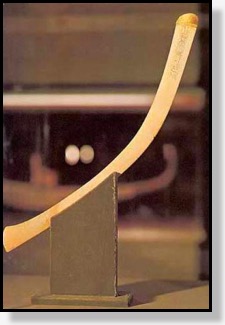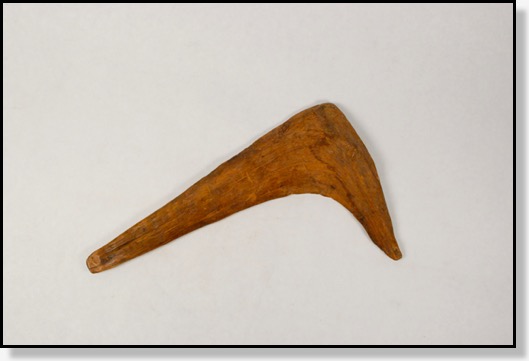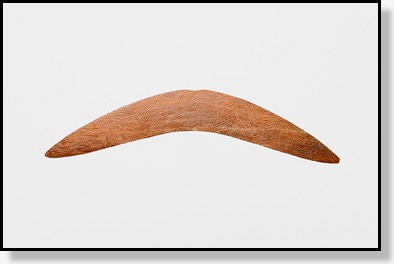<<< ORIGINS OF THE BOOMERANG >>>
While it is commonly believed that the boomerang originated in Australia, it has actually been found to be a part of many ancient civilizations. Even King Tutankhamun of Egypt had an extensive collection of boomerangs! What is believed to be the oldest boomerang—at around 20,000 years old—was found in a cave in what is now Poland, and was made from the ivory of a mammoth tusk. Boomerangs have been found among the artifacts of ancient civilizations throughout Europe.
One of King Tut’s boomerangs
However, the oldest wooden boomerangs do seem to be those from Australia, and are dated at around 10,000 years old. What is especially interesting about the use of the boomerang by the aboriginal people of Australia is that they are one of the few ancient cultures that did not develop the bow & arrow for hunting, so the boomerang became their primary hunting instrument, and therefore a very important part of their culture’s survival. Their highly developed use of the boomerang over many centuries is what has resulted in it still being around today and so closely associated with their culture.
Which brings us to another point of clarification. While the boomerang did began as a tool for hunting, the hunting type of boomerang was actually a “throwing stick” or “hunting stick” that was much larger & heavier than the returning type of boomerang, and it did not return when thrown.
Aboriginal hunting boomerang (top) and returning boomerang (bottom)

It is believed that the returning boomerang was probably discovered accidentally by a hunter who was working to refine a hunting stick. The returning type of boomerang is believed to have been used by ancient cultures for the same reason that we use them today—for fun! They used them for sport & for play, just like we do.
So let’s keep up the tradition!
